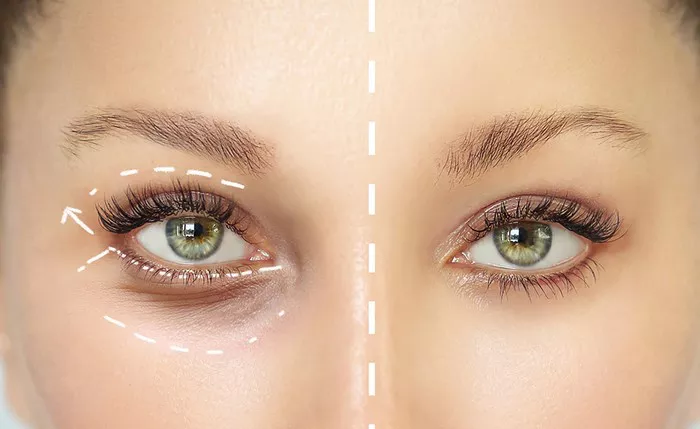Eyelid surgery, technically known as blepharoplasty, is a cosmetic procedure that aims to enhance the appearance of the eyes and rejuvenate the surrounding area. However, there are cases where eyelid surgery goes beyond cosmetic goals and becomes medically necessary. Medically necessary eyelid surgery serves not only to improve aesthetics but also to address functional impairments that impact a person’s vision and overall eye health. In this article, we delve into the factors that determine whether eyelid surgery is medically necessary, outlining the considerations and criteria that guide both patients and medical professionals in making informed decisions.
Understanding Medically Necessary Eyelid Surgery
Medically necessary eyelid surgery is distinct from cosmetic blepharoplasty in that it involves addressing specific functional issues that affect the eyes and vision. While cosmetic blepharoplasty focuses on improving aesthetic concerns such as sagging skin and puffiness, medically necessary eyelid surgery is undertaken to correct conditions that may lead to visual impairment or discomfort.
Conditions Requiring Medically Necessary Eyelid Surgery
Several eye conditions may necessitate eyelid surgery to restore visual function and alleviate discomfort. Some of these conditions include:
Ptosis:
Ptosis refers to drooping of the upper eyelid, which can obstruct the line of sight and cause strain when attempting to open the eye fully. Severe ptosis can lead to challenges in reading, driving, and performing everyday activities.
Ectropion:
Ectropion is characterized by the outward turning of the lower eyelid. This condition can cause irritation, excessive tearing, and exposure of the eye’s delicate tissues to environmental elements.
Entropion:
Entropion involves the inward turning of the lower eyelid, leading to discomfort, irritation, and potential damage to the cornea.
Dermatochalasis:
Dermatochalasis refers to the excessive skin on the upper eyelids that may hang over the eyelashes. This condition can obstruct vision and create a tired or aged appearance.
Blepharospasm:
Blepharospasm is a neurological condition characterized by involuntary eyelid spasms, which can significantly impact a person’s ability to keep their eyes open and perform daily tasks.
Assessing Medical Necessity
Determining whether eyelid surgery is medically necessary involves a comprehensive evaluation by an experienced ophthalmologist or a plastic surgeon specializing in oculoplastic surgery. Several factors are considered during the assessment:
Visual Impairment:
The extent to which the eyelid condition impairs vision is a crucial factor. If the condition obstructs the line of sight or causes discomfort that interferes with daily activities, the surgery may be deemed medically necessary.
Functional Impact:
The impact of the eyelid condition on daily activities, such as reading, driving, and using digital devices, is evaluated. If the condition hinders these tasks, surgical intervention may be recommended.
Ocular Health:
The health of the eye itself is assessed to determine whether the condition poses risks to eye health, such as corneal damage or chronic irritation.
Patient’s Well-being:
The patient’s overall well-being and quality of life are taken into account. If the eyelid condition causes psychological distress or affects self-esteem, it may influence the decision to pursue surgery.
Conservative Measures:
The effectiveness of non-surgical or conservative treatments is considered. If alternative interventions have been explored without satisfactory results, surgery may be recommended.
Navigating the Decision-Making Process
Deciding whether to undergo medically necessary eyelid surgery requires collaboration between the patient and the medical professional. The patient’s concerns, goals, and preferences are carefully considered alongside the medical evaluation. A detailed discussion about the potential risks, benefits, and outcomes of the procedure is essential to ensure informed consent.
Insurance Coverage for Medically Necessary Eyelid Surgery
In some cases, medically necessary eyelid surgery may be covered by medical insurance, especially if the condition directly affects vision and ocular health. However, coverage policies vary widely, and meeting specific criteria is often required. The patient’s medical team can assist in determining whether insurance coverage is applicable and guide them through the documentation process.
Conclusion
Medically necessary eyelid surgery goes beyond cosmetic enhancements, addressing functional concerns that impact vision and ocular health. Conditions such as ptosis, ectropion, entropion, dermatochalasis, and blepharospasm can necessitate surgical intervention to restore visual function and alleviate discomfort. The assessment of medical necessity involves evaluating visual impairment, functional impact, ocular health, and the patient’s overall well-being. Collaboration between the patient and medical professionals is vital to make well-informed decisions that prioritize both health and quality of life. If insurance coverage is applicable, the patient’s medical team can guide them through the process of obtaining coverage for the procedure. Ultimately, medically necessary eyelid surgery offers individuals the opportunity to not only enhance their vision but also improve their overall eye health and well-being.


